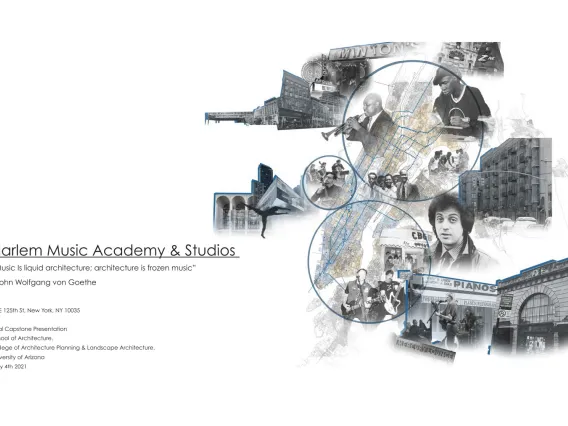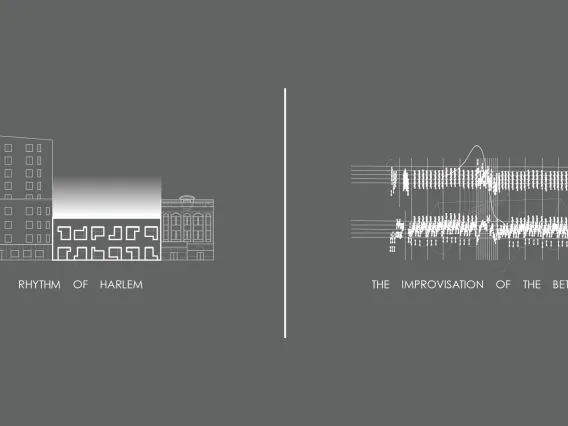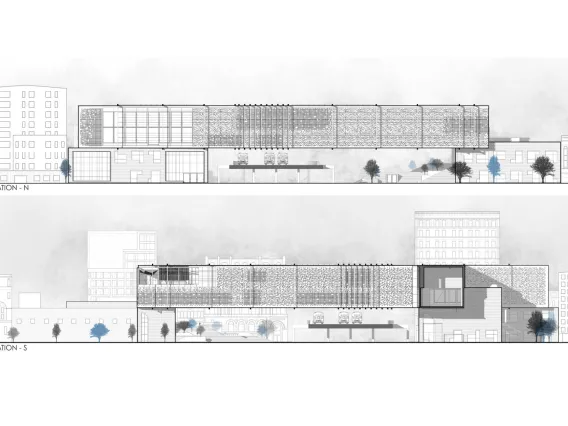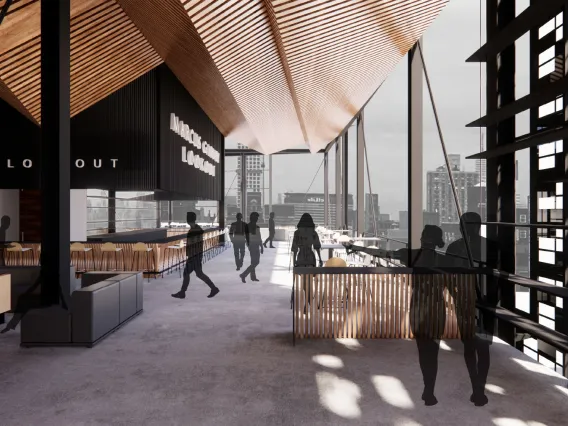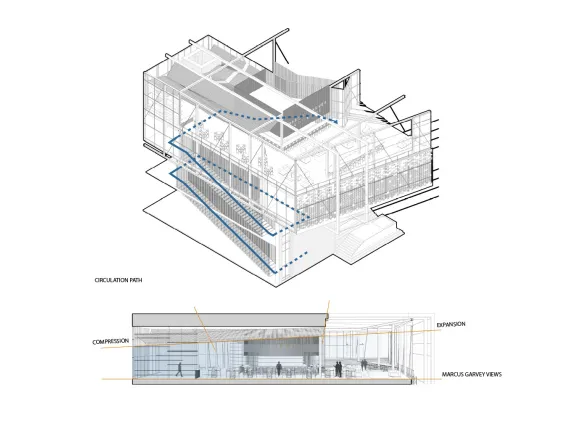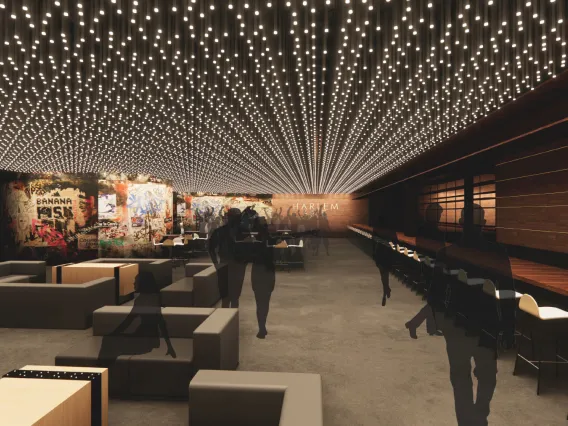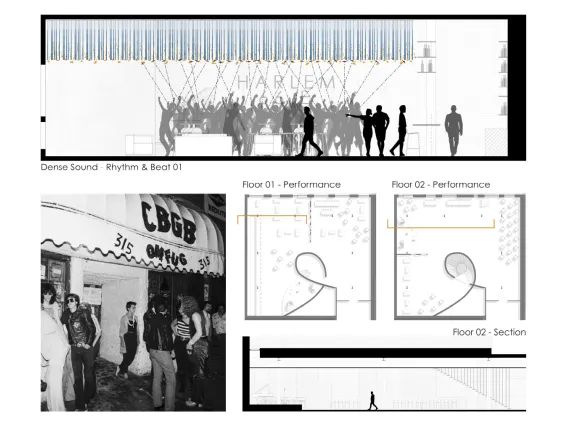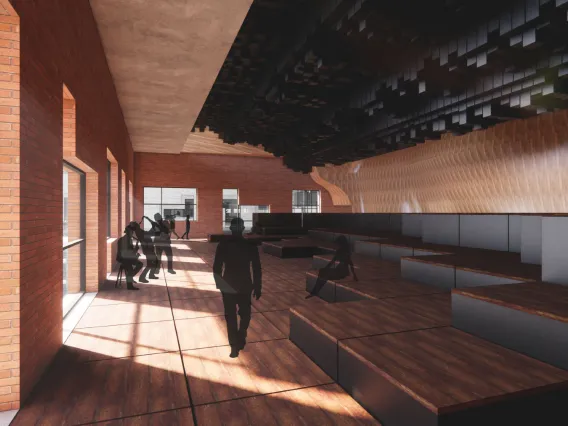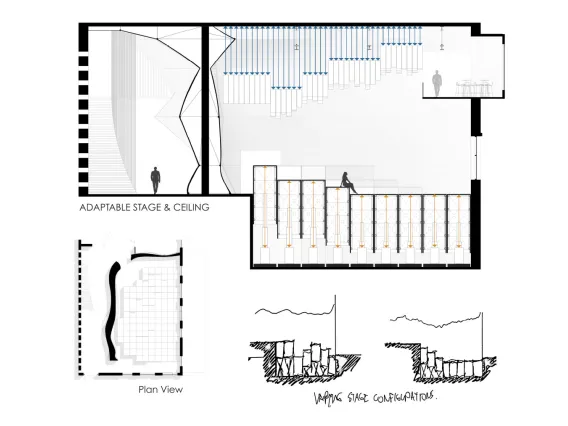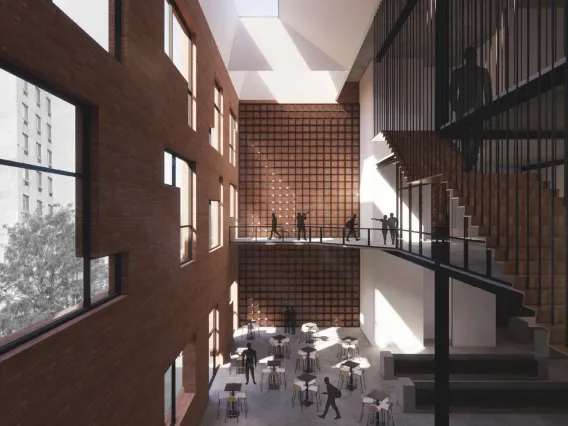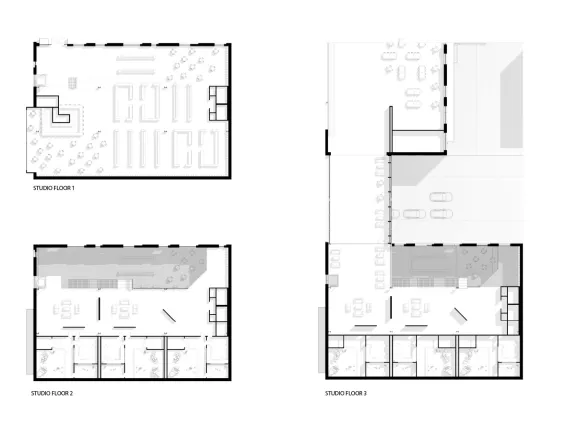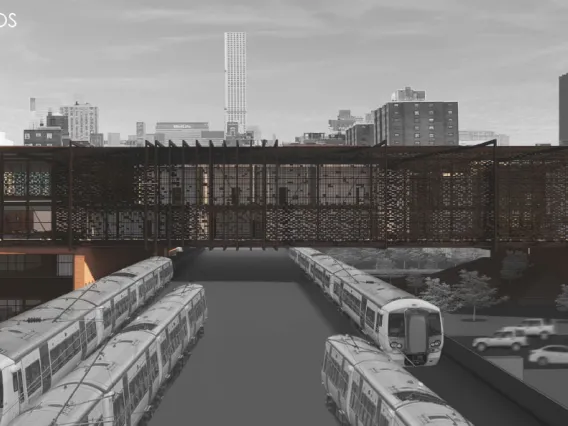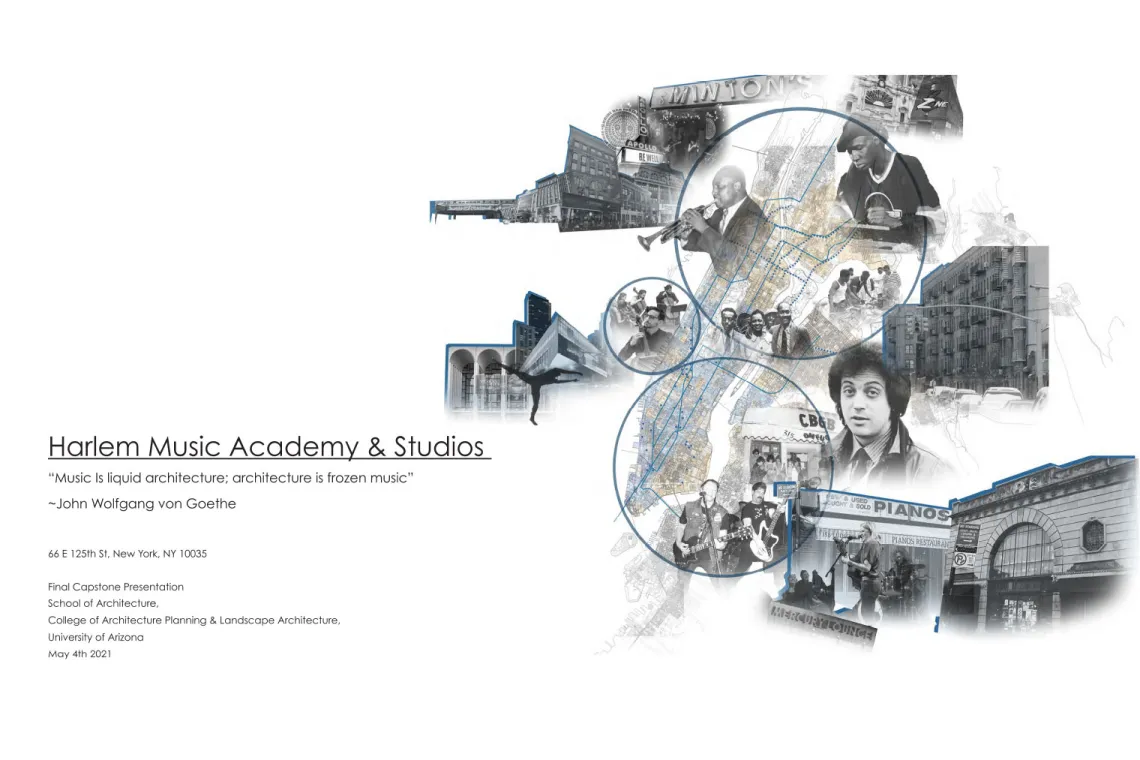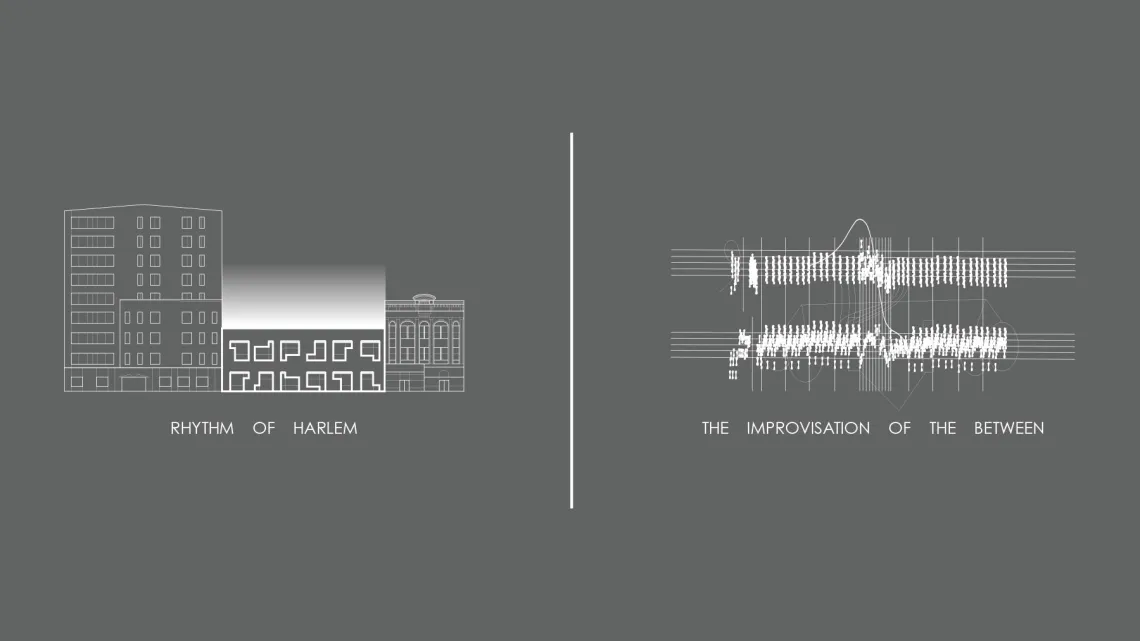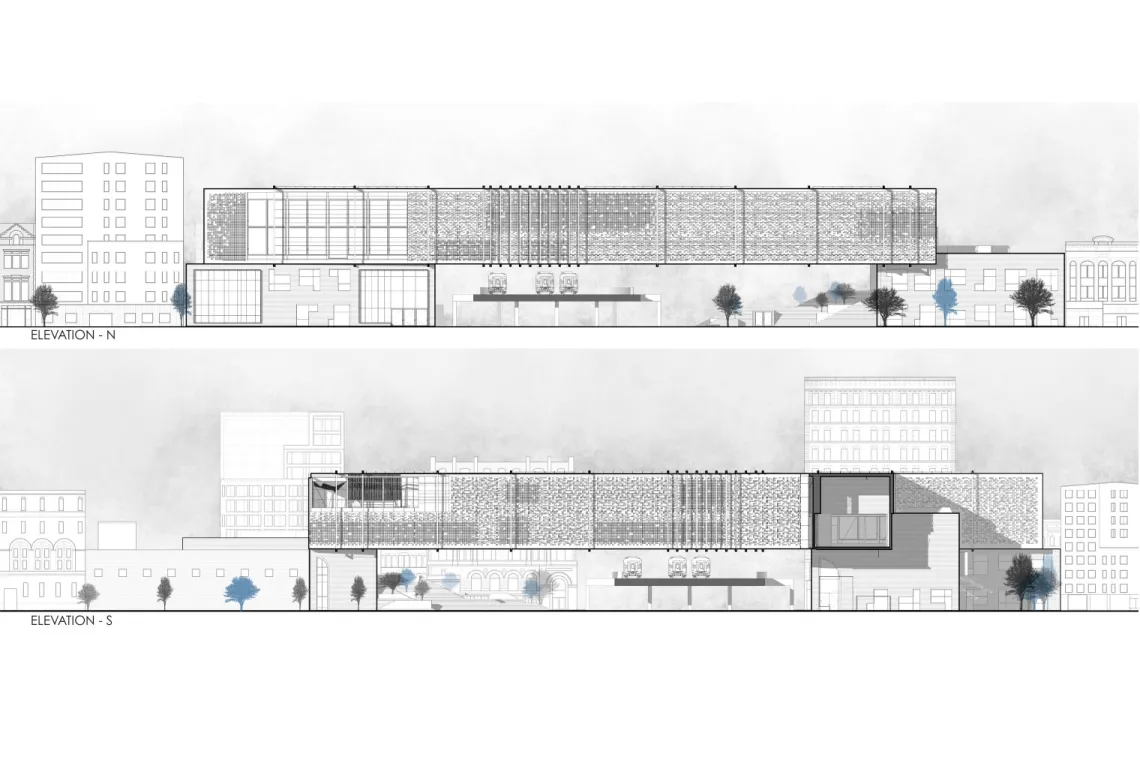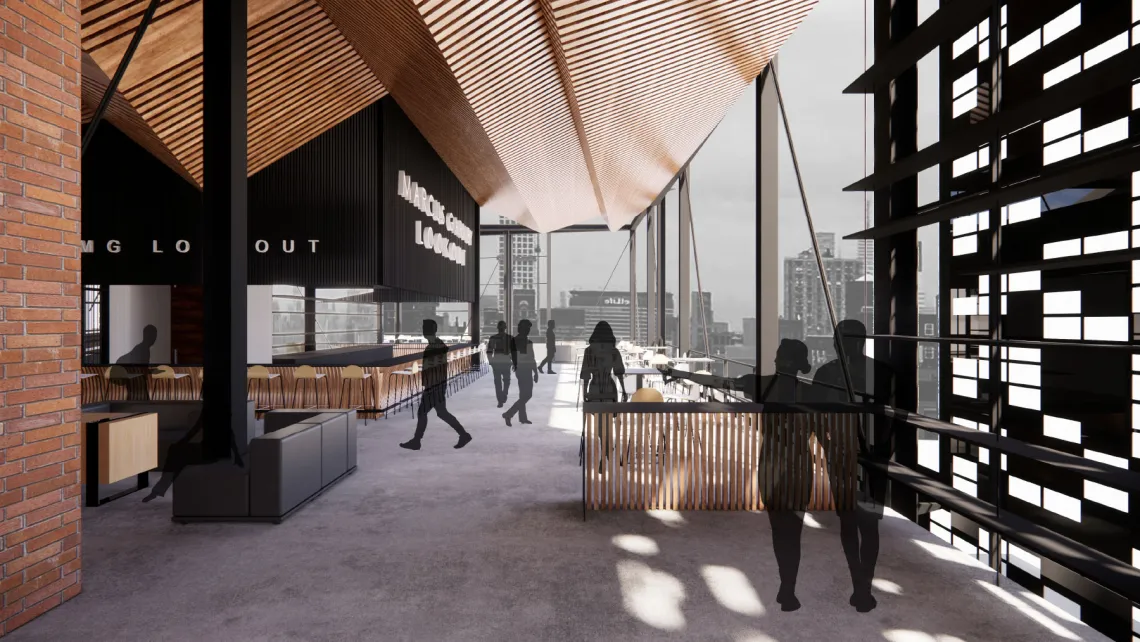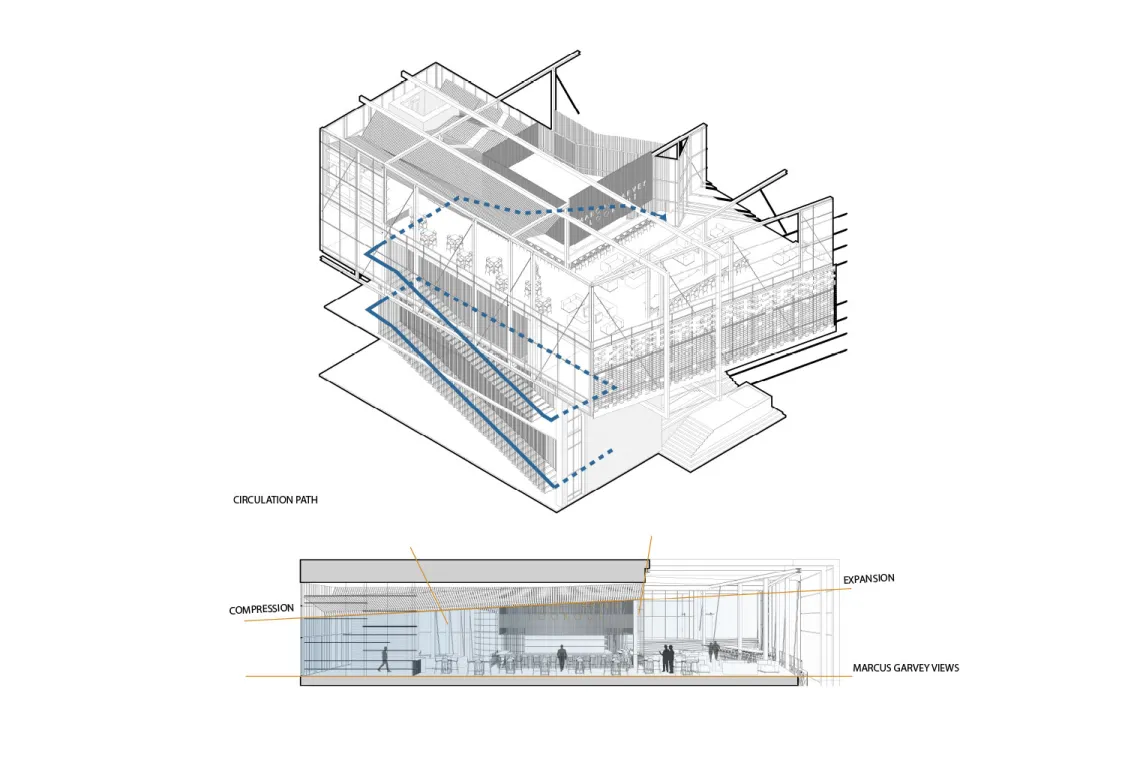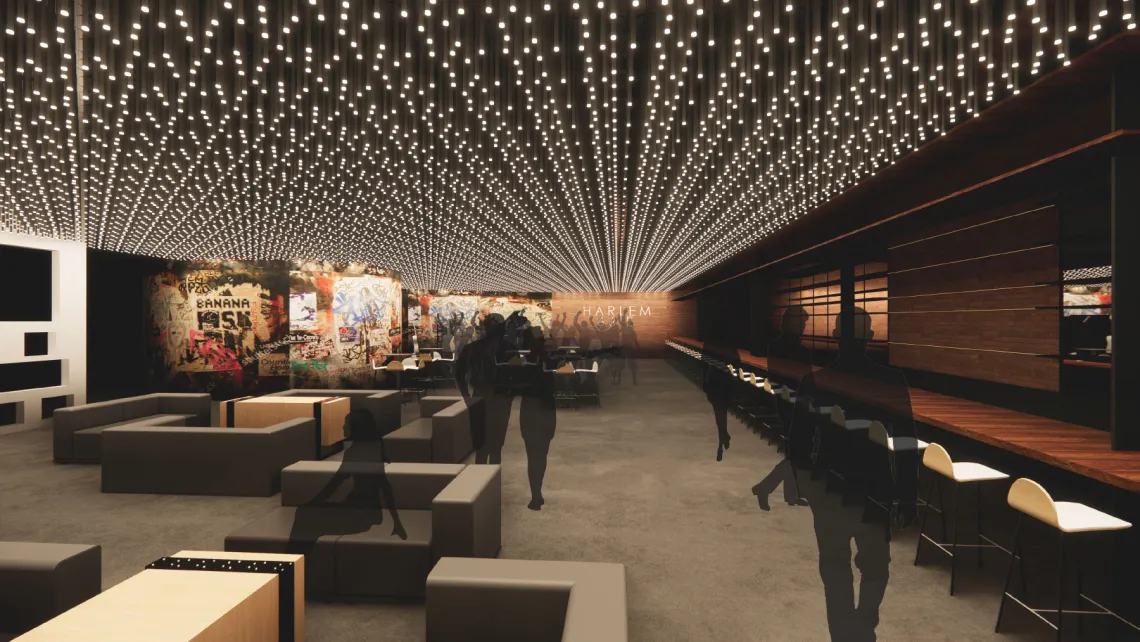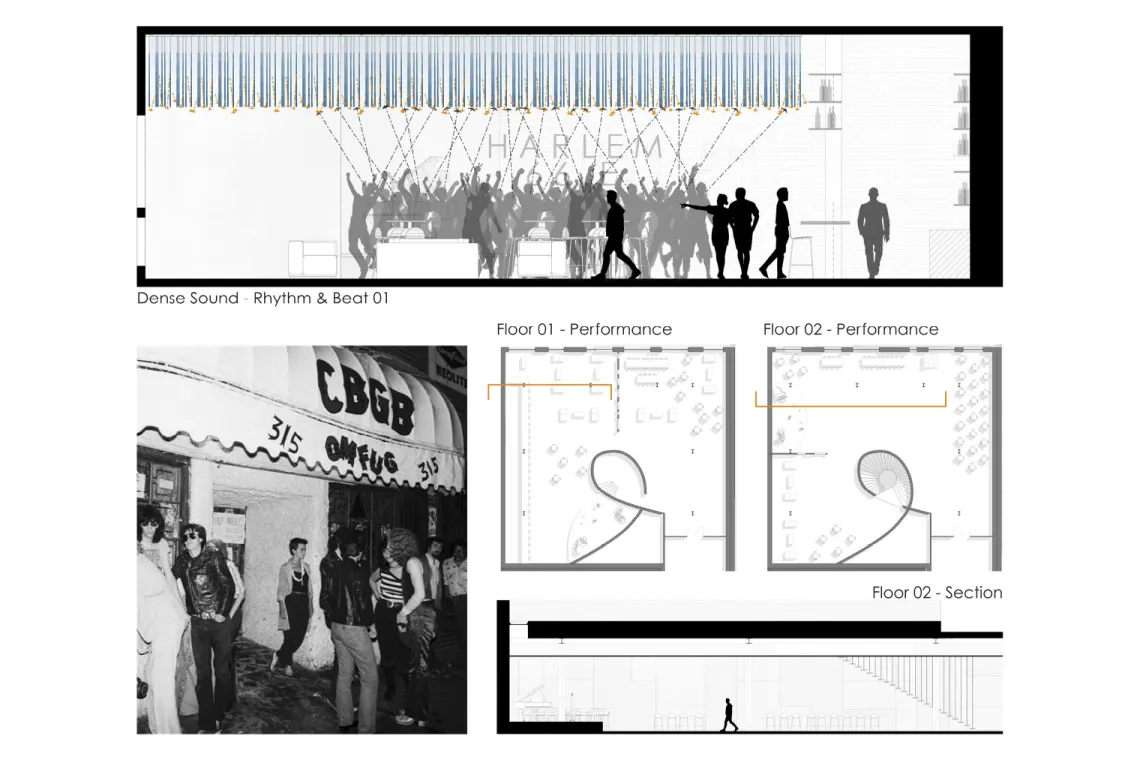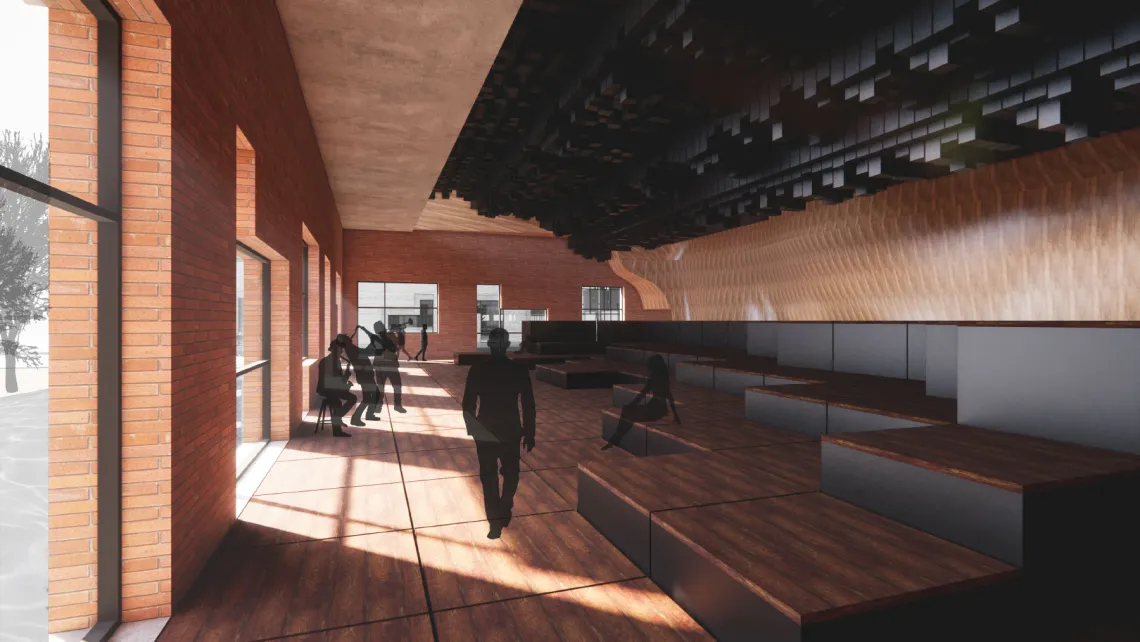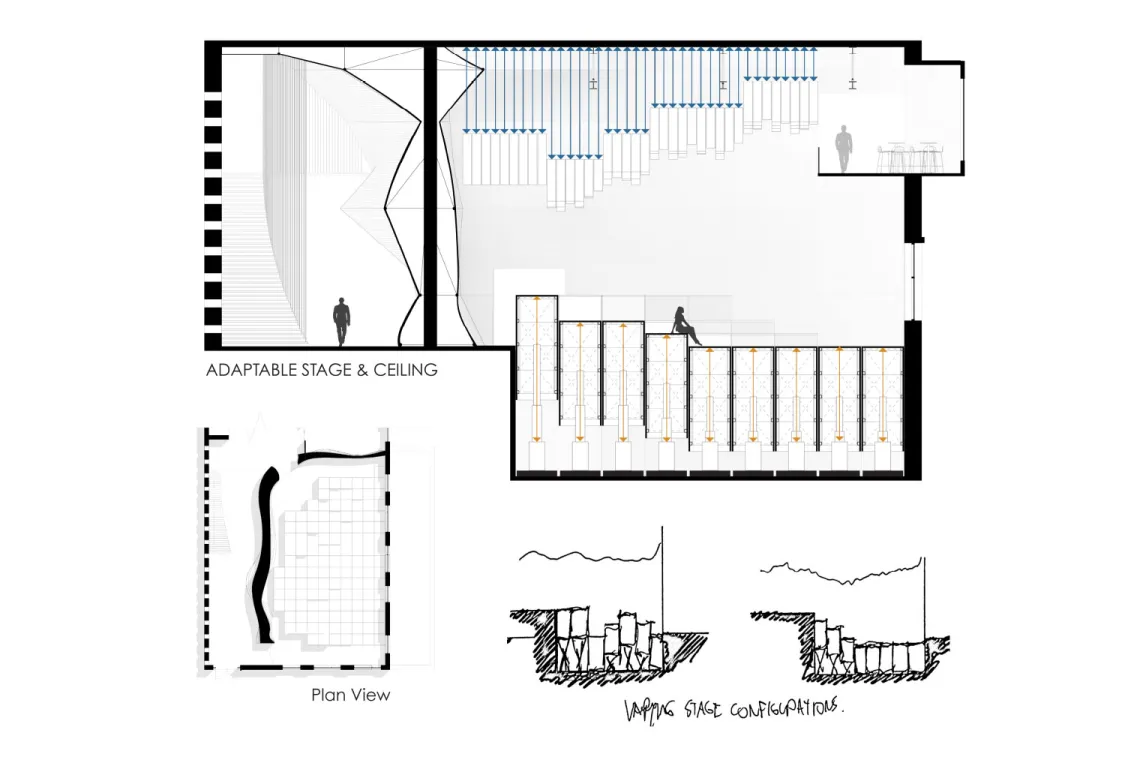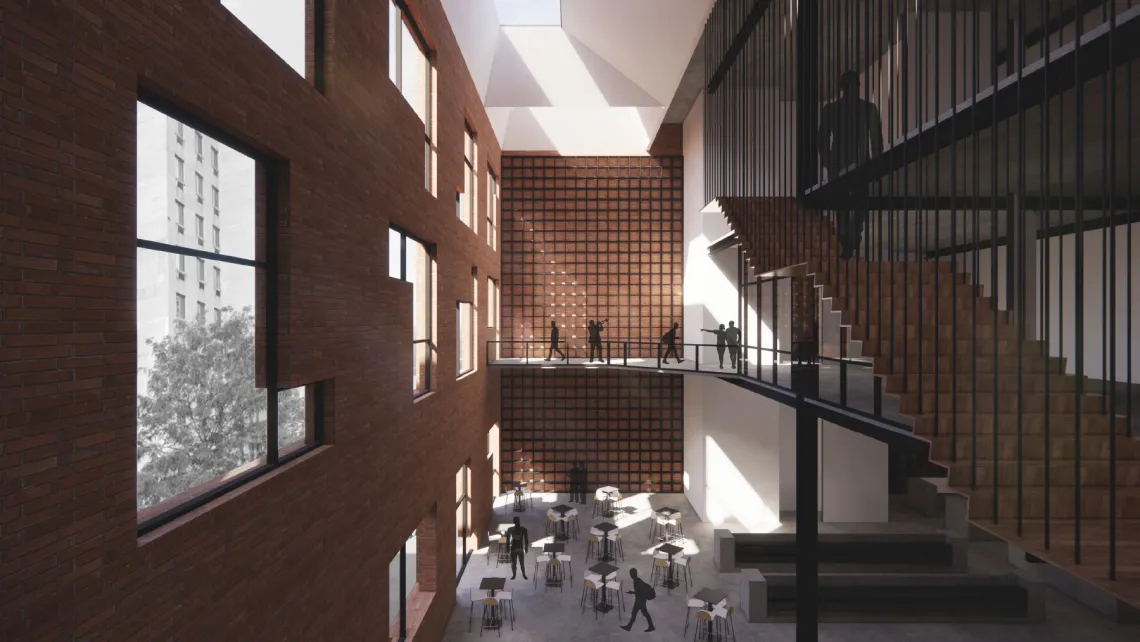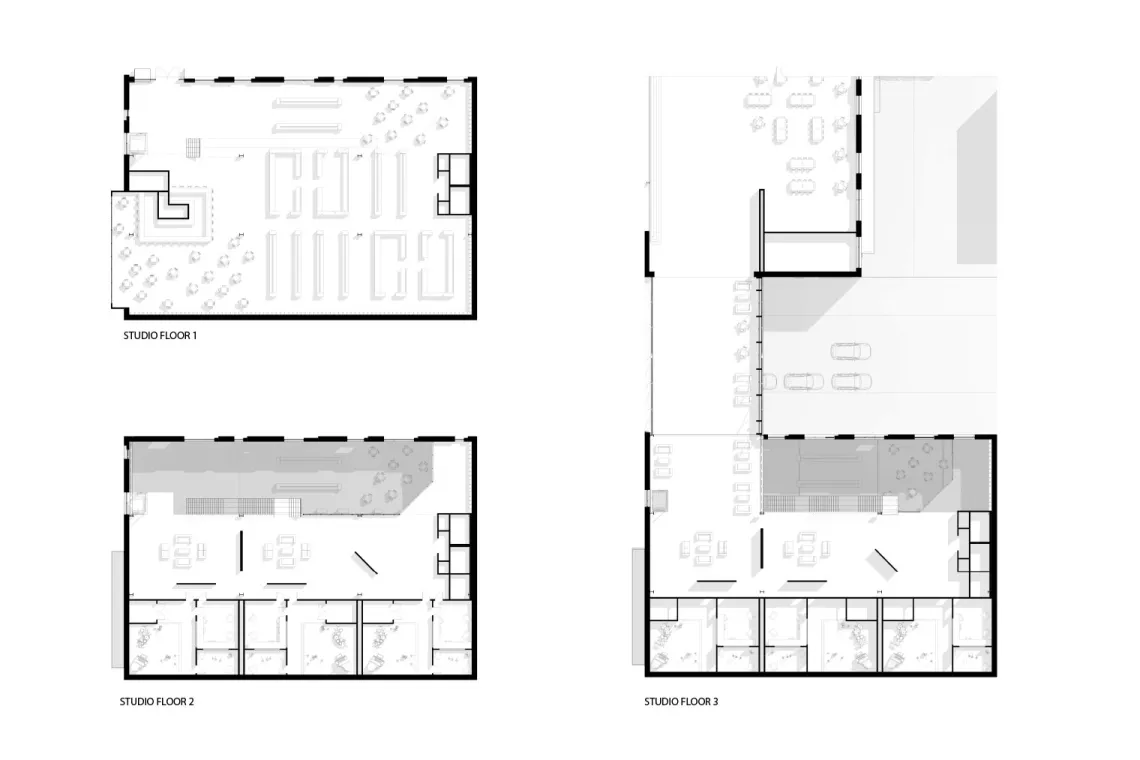Harlem Music Academy & Studios: Nikolas Altamura '21 B.Arch

Image Gallery
Click a thumbnail below to view a larger image and begin slideshow:
Project Narrative
Since the time of redlining and segregation, the Harlem community has in a perpetual cycle of systemic poverty and incarceration. While today arguments have been made about how to break that system through drastic means, architecture alone does not have the capability to solve these social issues. What architecture can do is create the shell around an impact being made. A way to break these cycles is through the cultivation of ownership in an idea, a task, a skill or an outlet different from those surrounding at-risk youth. Based on conversations/interviews between Alec Karakatsanis (author of Unusual Cruelty) and an incarcerated musicians, the lack of access to a musical outlet or training is glaring. When a successful rapper from Harlem and the Bronx neighborhoods was asked about his talent vs others, he responded by saying he was not the most talented, he simply had the most access. This is about him having the ability to express his work to those who could connect him to the industry. Considering the abundance of music that emerges from Harlem, the lack of an outlet is shocking.
Harlem and Jazz music have found their histories entwined. However today, jazz music has grown and taken on different variations. Currently we can experience both the essence of jazz as well as its musical language in many pop songs expressed by varying artists. The most notable modern sound that is rooted in jazz is when a song has -soul- or -gospel- sounds. This is not to say they are spiritual, but simply following the melodic patterns and organizations found historically in jazz and soul music. As Harlem has transformed through history, the loudest sound it made was with jazz music. While it will forever be remembered as such, 2020 Harlem is dominated with a mixing and blending of musical styles (pop). It feeds off its past from an aesthetic point of view, and (from a spiritual aspect) does provide the same style of popular entertainment to the city of New York in music and performance as it did 60 years ago. It also today does something equally important as it did during the 40s-60s. In modern times, Harlem is a diverse mixing pot in New York, with a variety of ethnicities living and working together. In the 1940s, though, redlining had labeled much of Harlem as hazardous, which was a way of isolating African Americans to these regions of New York and preventing the improvement of the areas. However, as jazz grew and became popular in the African American community, Harlem became home to jazz clubs and venues with better music than anywhere else in NYC. This brought white people into the area for the clubs and music. This exposure helped begin the process of civil rights and racial tolerance in the city (note: this is not saying it solved it, just began helping it along). We can see the success of this in today’s demographic breakdown of Harlem. A mixture of black people, white people, Asians, Puerto Ricans, Mexicans, Indians, Harlem is an ethnically diverse region of New York not matched anywhere else.
It is from this musical context and low-income, at-risk youth areas without access to expression that a music school is proposed for the site in East Harlem. As this is central in the regions of Harlem, most impacted by poverty and high crime rates (Manhattan), and is directly adjacent to the subway and rail access to the city from the Bronx, it is the perfect location for a place for formal instruction and introduction to the professional industry, giving an outlet to a place where there was once none.
All images are by Nikolas Altamura and may not be used or reproduced without express written permission of their creator.

